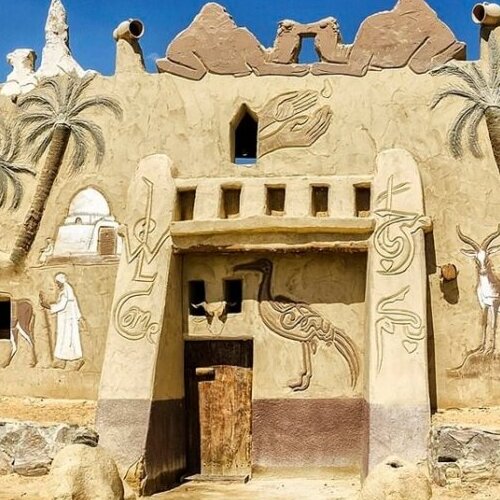No other nation in the world says ‘Welcome’ as often as the Egyptians, and every time, they mean it. While the ancient civilization of Egypt continues to amaze, contemporary Egyptians are equally remarkable.
History portal
Farafra Oasis: Echoes of the Past
The Farafra Oasis, a jewel in Egypt’s Western Desert, holds tales as ancient and mysterious as the sands surrounding it. Known as Ta-iht in antiquity, its mention in Pharaonic texts, such as the Dynasty V official’s titulary and the story of ‘The Eloquent Peasant’ from King Khety’s reign, stirs intrigue. This enigmatic oasis was once acknowledged in the Luxor Temple as a source of dates and minerals during Rameses II’s era, with further references to its occupation by Libyan troops in Merenptah’s reign, as noted in the Karnak Temple inscription.
A Place of Legends and Myths
Farafra, the third among the Seven Oases as recorded in the Edfu Temple, is enveloped in legends that transcend its sparse archaeological footprint. One such legend ties Farafra to the enigmatic vanishing of Persian King Cambyses’ army. As narrated by Herodotus, this 50,000-strong force vanished without a trace in a sandstorm en route from Thebes to Siwa, fueling centuries of fascination and exploration.
Roman Footprints and Medieval Majesty
The few archaeological sites in Farafra predominantly date back to the Roman Period. The region once hosted a fortress, a sentinel along ancient caravan routes. Most Roman ruins cluster around Qasr el-Farafra, the oasis’s current capital, which was historically its sole village. The Qasr, a fortress overlooking the desert, likely stands on a Roman foundation, expanded in Medieval times with over 125 rooms. Despite damage from 1950s rain, it remains a partly inhabited symbol of resilience.
Buried Secrets and Christian Hermitage
Nearby lies an ancient cemetery, where rock-cut tombs, some later homes to early Christian hermits, are nearly swallowed by the desert. Ahmed Fakhry, a revered Egyptian archaeologist, highlighted Ain Besai, about 12km from Qasr el-Farafra, as a site of significance, featuring a Roman cemetery and a limestone chapel among its treasures.
The Allure of the White Desert
Farafra is now famed for the breathtaking White Desert to its north-east, a protected area of surreal landscapes. Safari explorers here often visit Ain Hadra, a Roman-Byzantine era spring, where palm trees and ancient pottery sherds tell tales of a time long passed. The spring is part of the picturesque Ain el-Wadi, once a Roman habitation site, its fields now relics of history.
Traces of Ancient Civilizations
Venturing further, Wadi Abu Hannis unveils remnants of Roman mudbrick structures, and 70km north, the Hidden Valley, or Wadi el-Obeid, reveals prehistoric traces. An Italian-Egyptian mission has unearthed evidence of a Neolithic village from the 8th millennium BC, offering a glimpse into the lives of the Libyan Desert’s earliest pastoral inhabitants.
Created On March 18, 2020
Updated On Aug , 2024
FARAFRA OASIS Travel Guide



